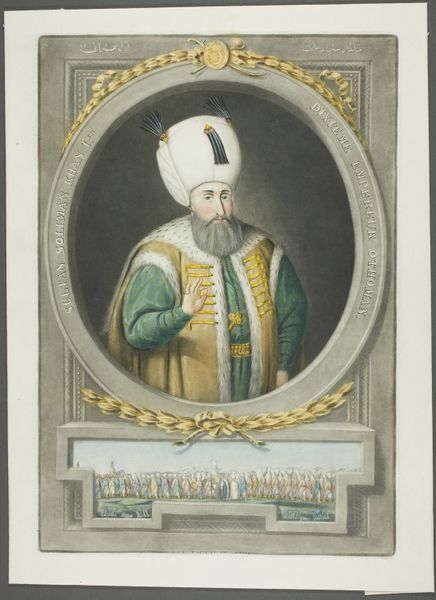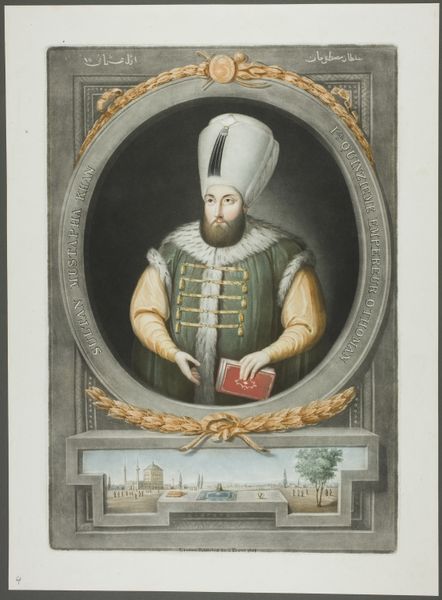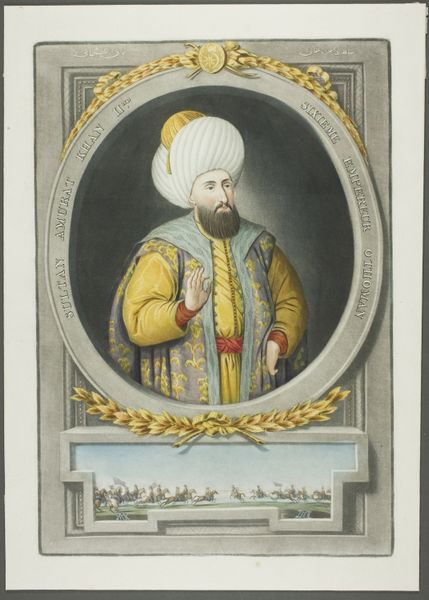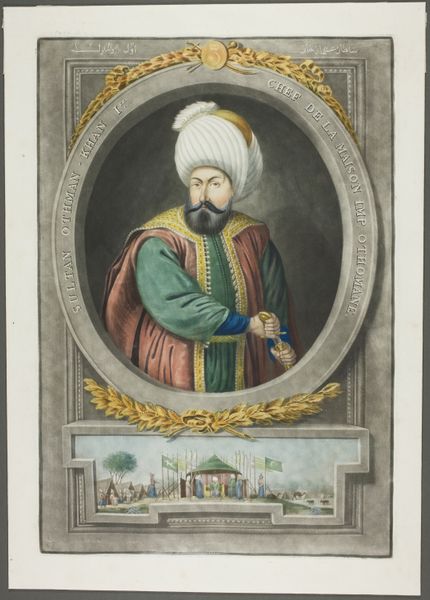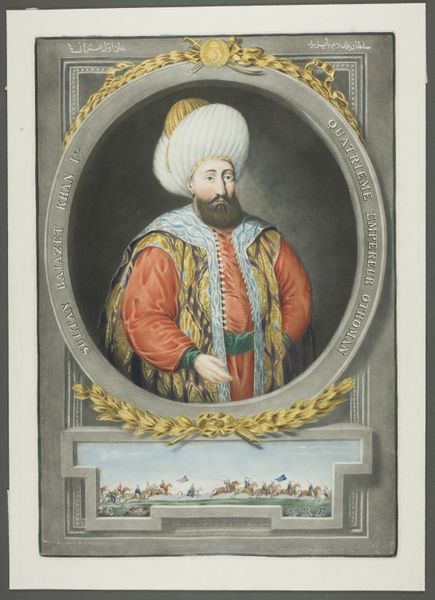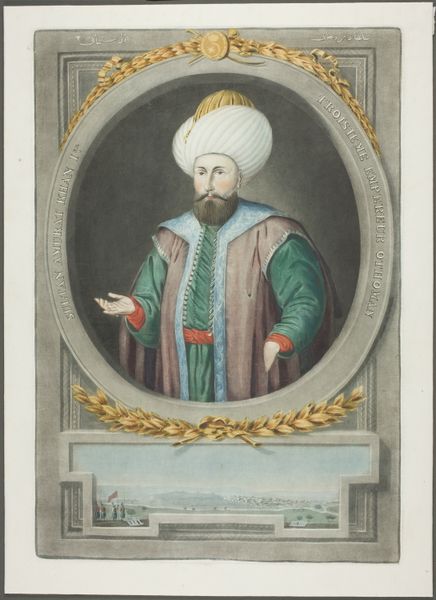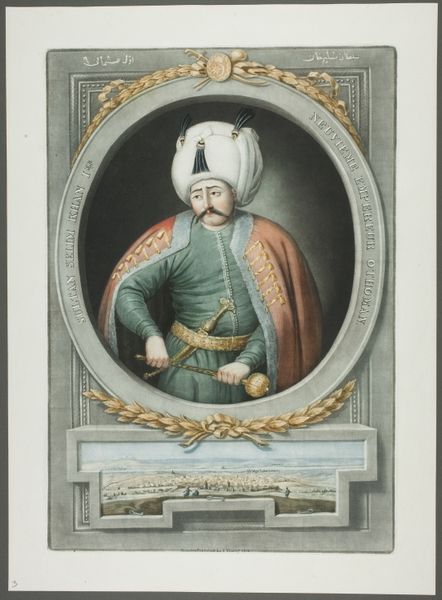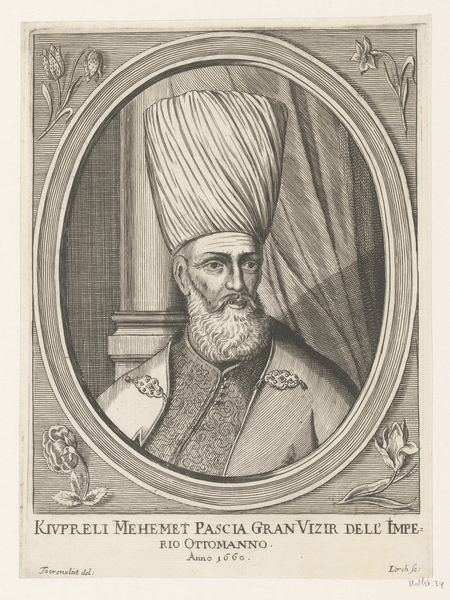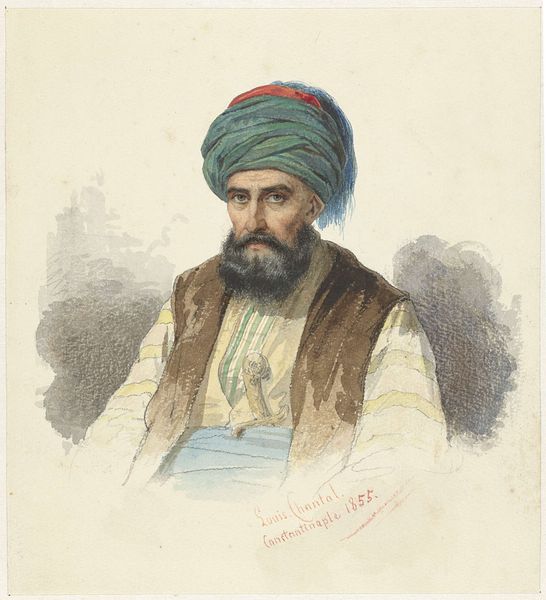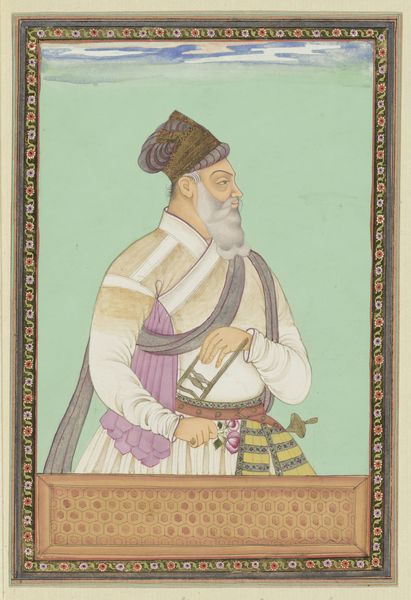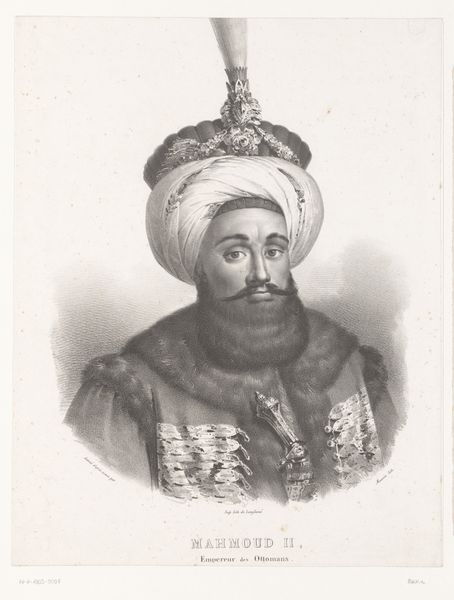
Achmet Kahn I, from Portraits of the Emperors of Turkey 1815
0:00
0:00
drawing, print, paper, watercolor
#
portrait
#
drawing
# print
#
paper
#
watercolor
#
islamic-art
#
watercolour illustration
#
history-painting
#
miniature
#
watercolor
Dimensions: 375 × 253 mm
Copyright: Public Domain
Editor: So, here we have "Achmet Kahn I, from Portraits of the Emperors of Turkey," a watercolor and pencil drawing made in 1815. It strikes me as so meticulously detailed, almost like a photograph but with a real painterly quality to the washes of color. What stands out to you the most? Curator: What captures my attention, as it always does with these kinds of historical portraits, is the presentation of power. Not just the ostentatious displays of wealth in his clothing – look at that turban, almost defying gravity! – but how the artist constructs a *vision* of authority. There’s a kind of serene detachment in his gaze. He seems completely aware of his station, a world unto himself, doesn’t he? But does it ring true? Editor: I'm not so sure. He seems almost… distant. Do you think the artist was aiming for realism or something more symbolic? Curator: Ah, good question! I wonder if "realism," as we understand it now, was even the aim. It's possible Young may have never seen Achmet in person. This is a carefully constructed image, possibly drawn from descriptions or other portraits. That lower register showing a panoramic scene reminds me of miniature painting, maybe attempting to capture the emperor's domain, both physical and symbolic. I suppose I am asking, can an image truly reveal someone, or only reflect the expectations and assumptions of the artist and their era? What does the image WANT us to believe? Editor: That's fascinating! So, maybe it's less about who Achmet Kahn actually *was* and more about what the artist, or even the patron, *wanted* him to represent? Curator: Exactly. These historical works are puzzles. Each choice of line, colour, and composition offers a clue, but also poses a new question. And who knows, perhaps that "distance" is the closest we get to a real, albeit mediated, encounter with the Sultan. Editor: Well, I’ll definitely be thinking about what the artist *wanted* us to see next time I look at a portrait. It's given me a new lens.
Comments
No comments
Be the first to comment and join the conversation on the ultimate creative platform.
